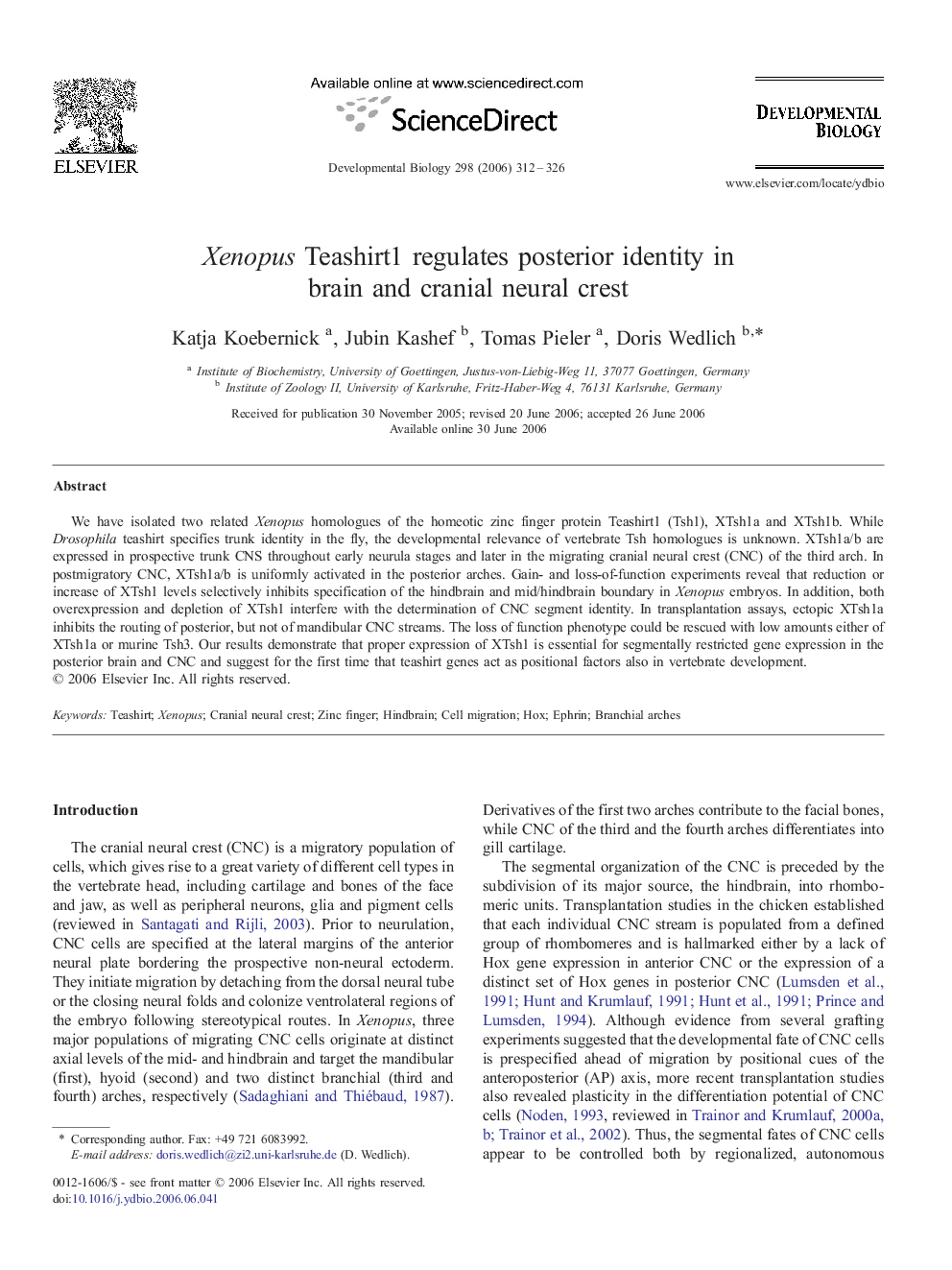| Article ID | Journal | Published Year | Pages | File Type |
|---|---|---|---|---|
| 2175701 | Developmental Biology | 2006 | 15 Pages |
We have isolated two related Xenopus homologues of the homeotic zinc finger protein Teashirt1 (Tsh1), XTsh1a and XTsh1b. While Drosophila teashirt specifies trunk identity in the fly, the developmental relevance of vertebrate Tsh homologues is unknown. XTsh1a/b are expressed in prospective trunk CNS throughout early neurula stages and later in the migrating cranial neural crest (CNC) of the third arch. In postmigratory CNC, XTsh1a/b is uniformly activated in the posterior arches. Gain- and loss-of-function experiments reveal that reduction or increase of XTsh1 levels selectively inhibits specification of the hindbrain and mid/hindbrain boundary in Xenopus embryos. In addition, both overexpression and depletion of XTsh1 interfere with the determination of CNC segment identity. In transplantation assays, ectopic XTsh1a inhibits the routing of posterior, but not of mandibular CNC streams. The loss of function phenotype could be rescued with low amounts either of XTsh1a or murine Tsh3. Our results demonstrate that proper expression of XTsh1 is essential for segmentally restricted gene expression in the posterior brain and CNC and suggest for the first time that teashirt genes act as positional factors also in vertebrate development.
